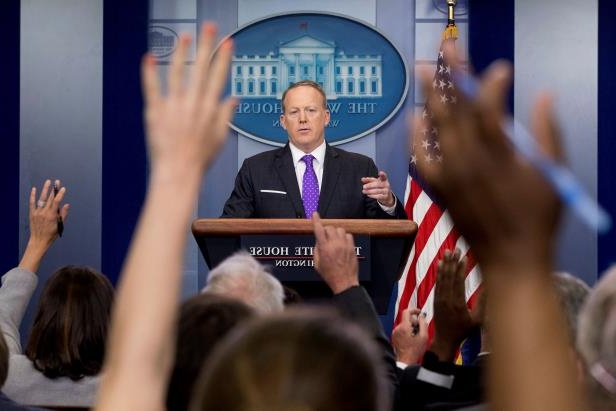The New York Times, the Washington Post and the rest of what remains of the high-wattage mainstream news organizations have done a fairly good job during these dark hours of untangling White House drama in its aftermath (with some glaring exceptions, of course), but they’ve thus far failed in the most fundamental way.
None of these outlets to this point have proven to possess good sources in regards to Russiagate, which is what we desperately require now. “Credible media” is too focused on parsing “official statements,” reacting to surface outrages and ladling out punditry, the latter of which is far cheaper content to produce than painstakingly crafted reportage. That’s a fault of the press but also the reality of the shocking media shift we’ve experienced over the last 20 years, as we’ve moved into the Digital Age, which has caused enough belt tightening to crack a hip. Well-staffed overseas bureaus with connections to European Intelligence might have come in handy right about now.
Without the ability to dig beneath the surface, and those muscles seem to have atrophied across the board, a news org. can be useful and instructive and entertaining, but it can’t be essential. An individual with some deep sources and a Twitter account is just as likely to deliver what’s most needed.
A really smart entry from the Politico piece “What the Press Still Doesn’t Get About Trump“:
9. The media’s priorities are all wrong.
Zeynep Tufekci, associate professor at the University of North Carolina School of Information and Library Science and author of the forthcoming Twitter and Tear Gas: The Power and Fragility of Networked Protest.
The press faced a range of structural weaknesses that led to its failures before the 2016 election. These weaknesses are persisting—albeit with slightly better optics because journalists face a more adversarial administration, which creates a misleading illusion of improvement.
The problem is both structural and ethical. For starters, media are clustered, and prone to herding. Not only did this cause them to underestimate Trump’s election chances, but they continue to miss the dynamics of polarization in this country, and what that means for politics. Pundits and many journalists also remain attracted to horse-race stories that resemble fiction (stumble in the second act! comeback in the third act!), which causes them to miss real dynamics because they are too busy fitting their reporting into interesting narrative structures. This also does a disservice to journalists’ remaining essential role: telling the rest of us about important questions of policy and substance that we cannot easily access, investigate or absorb on our own.
What’s more, many journalists still practice “access journalism”—which is futile. Thanks to social media and partisan cable channels, politicians now easily have their own access to audiences. The old style of access journalism often amounts to little more than reporters being subjected to spin by the insiders. But even after the election, process and inside-the-White House stories continue to interest journalists (and a large section of the so-called chattering classes) disproportionate to those stories’ political or policy importance.
Structurally, the digitally led decoupling of individual stories from newspapers has meant that solid investigative work is no longer financed by ads and gossipy punditry. But gossipy punditry and contrarianism can still bring clicks—the way sugary soda sells. So they persist, and the whole news ecology is further degraded, despite the fact that there are many really good investigative journalists out there. Finally, media are still getting played by outlets like WikiLeaks that simply prey on journalists’ weaknesses—being prone to gossip; not understanding technical stuff; prizing “copy” at regular intervals so they can’t take their eyes off drip-drip-drip leaks to figure out what’s going on.
One bright spot in all this is that subscriptions are rising: That may allow media outlets some independence, but improvements will likely come only if subscribers match their money with a demand that the media reckon with their profound and historic failure in 2016.•


